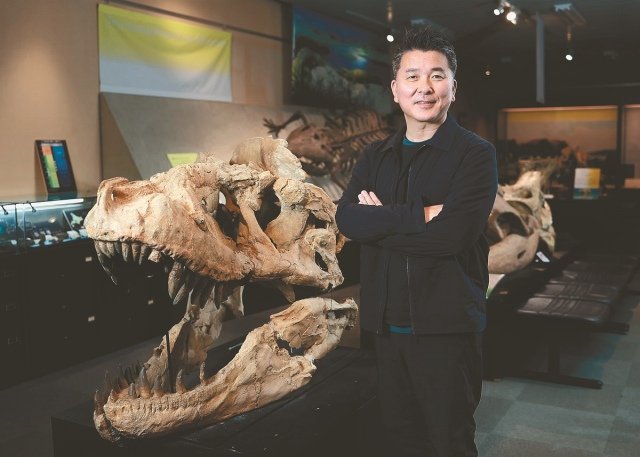Paleontologist Yoshitsugu Kobayashi
12:00 JST, April 5, 2024
Yoshitsugu Kobayashi, a renowned paleontologist professor and deputy director of the Hokkaido University Museum, is nicknamed “Falcon’s Eye” for his successive discoveries of dinosaur fossils. He also played a major role as an advisor for the film “Kyoryu-cho-densetsu2: Gekijoban Darwin ga Kita!” (Dinosaur super legend2: Darwin’s Amazing Animals theatrical edition), which explores the period after an asteroid impact believed to have caused the extinction of the dinosaurs.
How did Kobayashi, who was fascinated by castles and Buddha statues as a child, become a world-famous paleontologist?
Looking for ‘treasures’
Kobayashi was born in 1971 in Fukui Prefecture, which was nationally known for its dinosaur fossil finds. However, growing up, Kobayashi was more fascinated by castles, Buddha statues, temples and ancient tombs than by dinosaurs.
However, finding a fossil during a high school science club activity set him on the path to becoming a paleontologist. During the activity, he discovered an ammonite after cracking open a rock with a hammer and was thrilled to realize he had in his hands a creature that lived 150 million years ago.
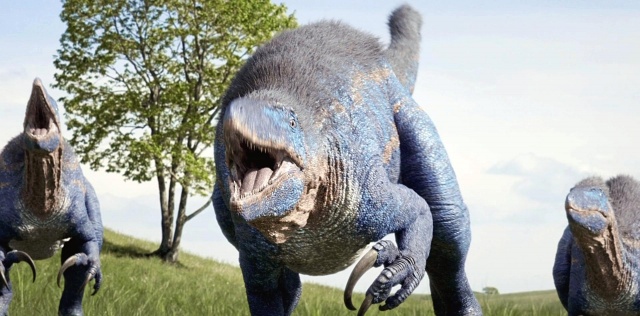
Threatening Maip Dinosaurs
“As a child, I was drawn to feeling the flow of time, whether it was castles, which were made by people who lived hundreds of years ago, or fossils, the remains of creatures that lived more than 100 million years ago,” Kobayashi said.
Since then, Kobayashi often went looking for fossils. However, he said, “I didn’t understand evolution well and didn’t like biology.” For him, digging for fossils was like a treasure hunt. He considered digging for fossils as a hobby and had a vague idea of becoming an employee of the company in the future.
But once he started college, he began to worry. He accidentally went to the United States for a year to study a language, which only increased his anxiety and impatience about the future.

Tools Kobayashi takes to his dinosaur dig
“What do I really want to do?” Kobayashi wondered. At a time when he felt like he was losing sight of himself, he impulsively picked up a dinosaur encyclopedia in the university library. As he leafed through it, the excitement he felt at touching the lives of creatures from the distant past through fossils came flooding back.
“I want to learn more about dinosaurs. I’ll go to America again,” Kobayashi thought. Three months after returning from his study abroad, he returned to the United States.
A turning point
Kobayashi graduated from the University of Wyoming with highest honors and advanced placement due to his tireless effort and mastery of study techniques. However, he faced challenges in graduate school at Southern Methodist University, which he entered after overcoming a 50-to-1 competition. No matter how much research he did, it was consistently rejected by his professors, and he struggled to gain their approval.
“I realized that having knowledge and knowing how to apply it to create something are worlds apart. Studying and doing research are not the same,” Kobayashi said.
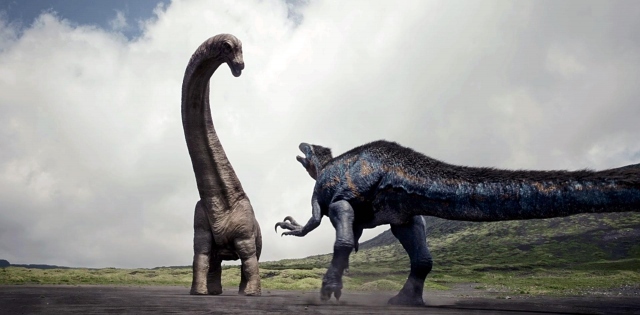
A battle between a colossal herbivorous Puertasaurus, from behind, and a gigantic carnivorous Maip.
He thought, “I just have to go back to Japan,” several times, as he kept trying different approaches. One day, a professor listening to his presentation applauded and shouted, “Great!”
“I think it was at that point that I made the transition from student to researcher,” Kobayashi recalls.
Since then, Kobayashi has discovered new and valuable dinosaur fossils around the world, including in Mongolia, the state of Alaska, and China. In the Gobi Desert of Mongolia, he discovered the complete skeleton of a Deinocheirus, known as the mysterious dinosaur. In Mukawa, Hokkaido, he unearthed the complete skeleton of a large herbivorous dinosaur from the end of the Cretaceous, the first to be found in Japan. He has also published research that challenges previous theories, revealing that among theropods, which were considered carnivorous, there were also herbivorous species.
Humanity in danger
Several studies have clearly shown that some dinosaurs evolved into birds. “In the past, dinosaurs were thought to be dumb monsters that had become extinct. However, these creatures that once walked on land underwent a huge change and achieved an incredible evolution into birds that even dominate gravity,” Kobayashi said. “It is dinosaurs that have left us all this data.”
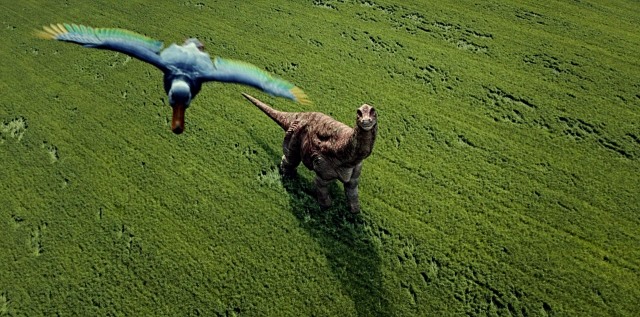
A Puertasaurus looks up to the sky.
While he is busy with his research and writing, and with the activities of the Hokkaido University Museum, he spends several months each year abroad on excavations, immersing himself in the world of dinosaurs.
“For me, dinosaurs have become a part of life. When I take surveys or start research, my body moves without thinking. I think that’s probably because I like them so much,” he said.
The film Kobayashi served as a consultant for depicts the struggle of dinosaurs desperately trying to survive after an asteroid impact. While such a story is an event from the distant past, the truth is that we are currently living in an era where species are becoming extinct at an unprecedented rate, he said. The cause is not meteorites, but human activity.
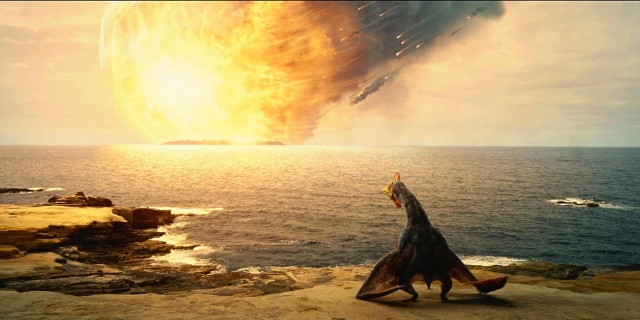
The moment of an asteroid impact
“We, humanity, are actually in a very dangerous state,” Kobayashi said. Understanding dinosaurs is also linked to knowing about the future of the Earth and humanity. This strong belief drives him to conduct his research.
“The key word in dinosaur research now is resurrection. It’s exciting to see more and more research coming forward that’s [researchers] “To restore the original, real appearance of the dinosaurs,” Kobayashi said.
Despite being a leading researcher in the field, Kobayashi doesn’t seem to feel pressured. During a dig in Uzbekistan last summer, Kobayashi competed with his students every day to find fossils.
“I won in the end and my students called me childish,” he said. At the moment Kobayashi said this, his sharp “falcon eyes” softened.
Dinosaurs come to life in high-definition CGI
“Kyoryu-cho-densetsu2: Gekijoban Darwin ga Kita!” is the fifth film of NHK’s popular nature program “Darwin ga Kita!” (“Darwin’s Amazing Animals”), which airs on Sunday nights. It is set 66 million years ago on Gondwana, an ancient supercontinent. There, life-and-death battles took place between dinosaurs such as the colossal herbivore Puertasaurus, the giant carnivore Maip, and the horned Carnotaurus, all of whom used their wits to survive and reproduce.

Dinosaurs living in harsh environment after asteroid impact
The film also illustrates dinosaurs desperately struggling to survive amid fires and a cooling global environment caused by an asteroid impact. Unknown aspects surrounding dinosaurs, revealed by the latest research, are depicted in immersive high-definition CGI.


